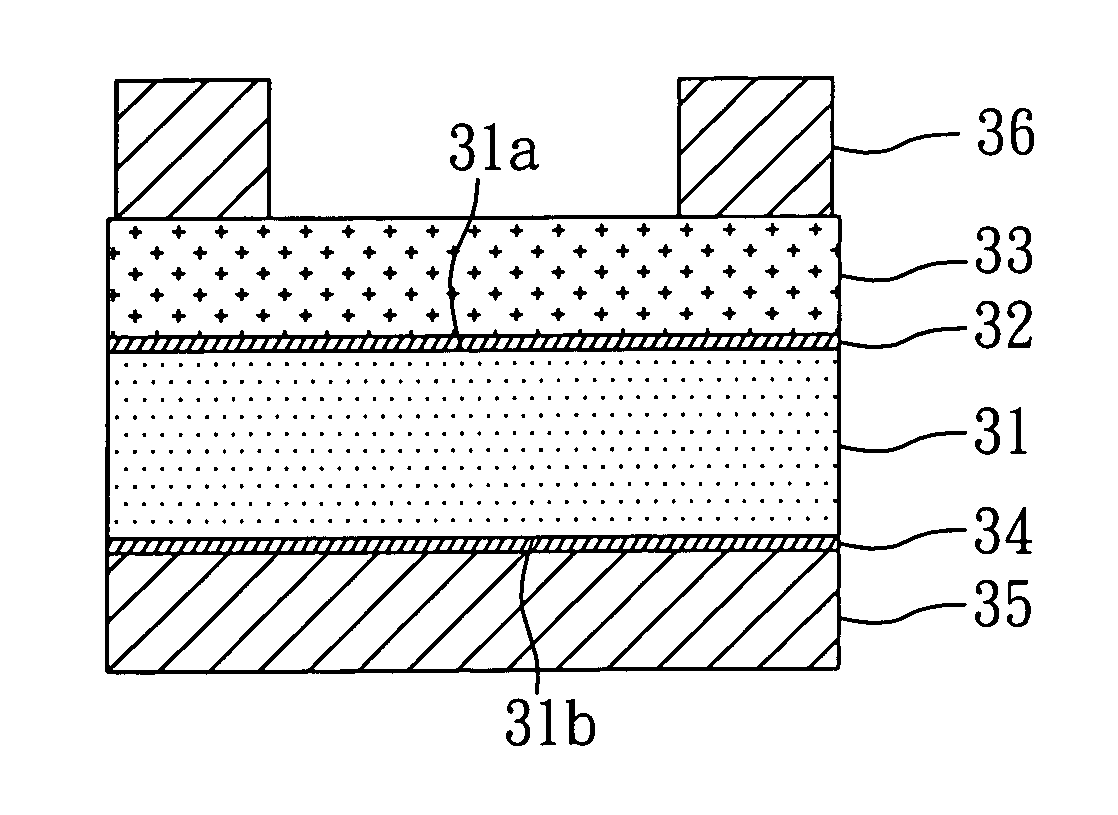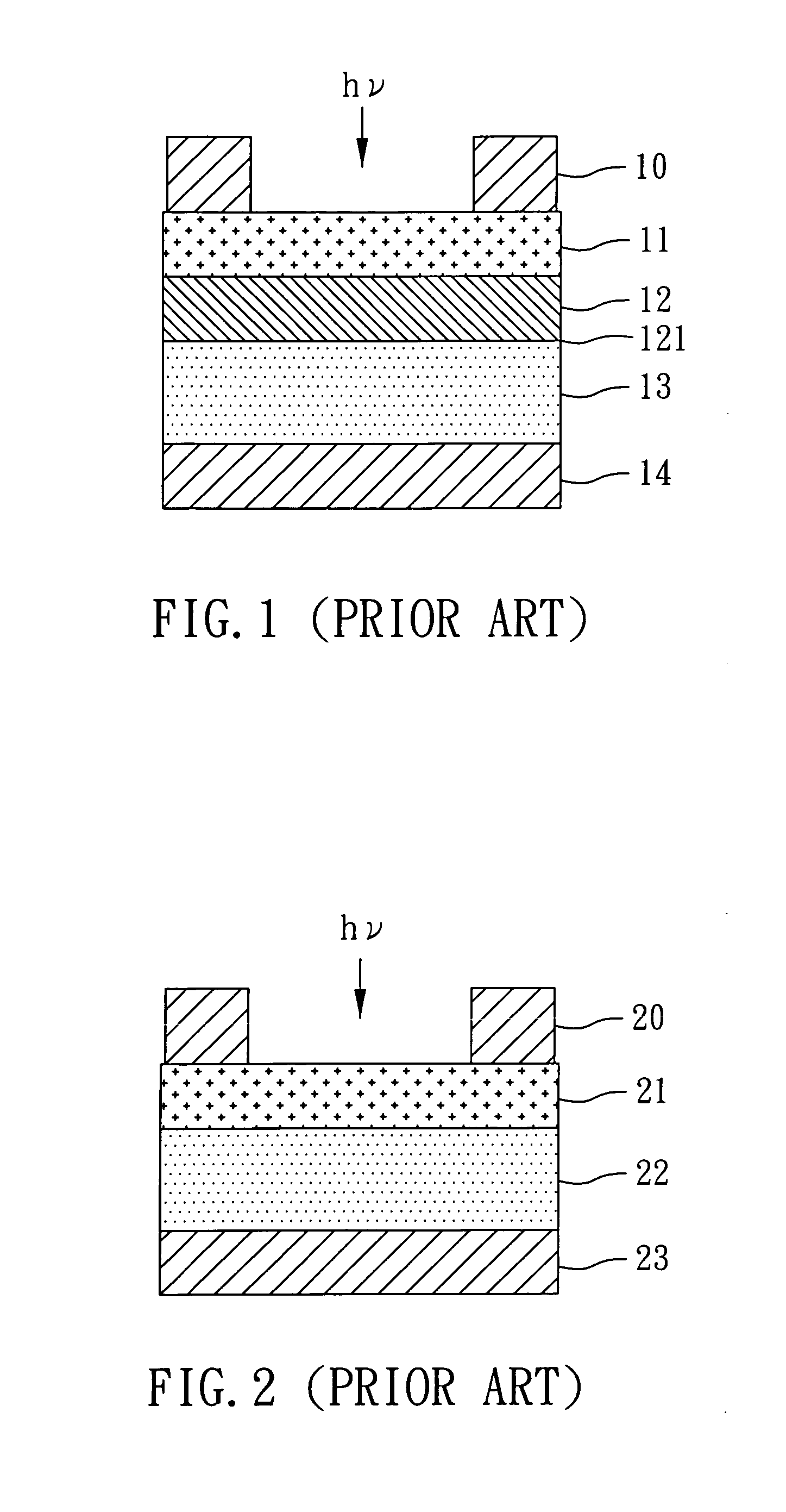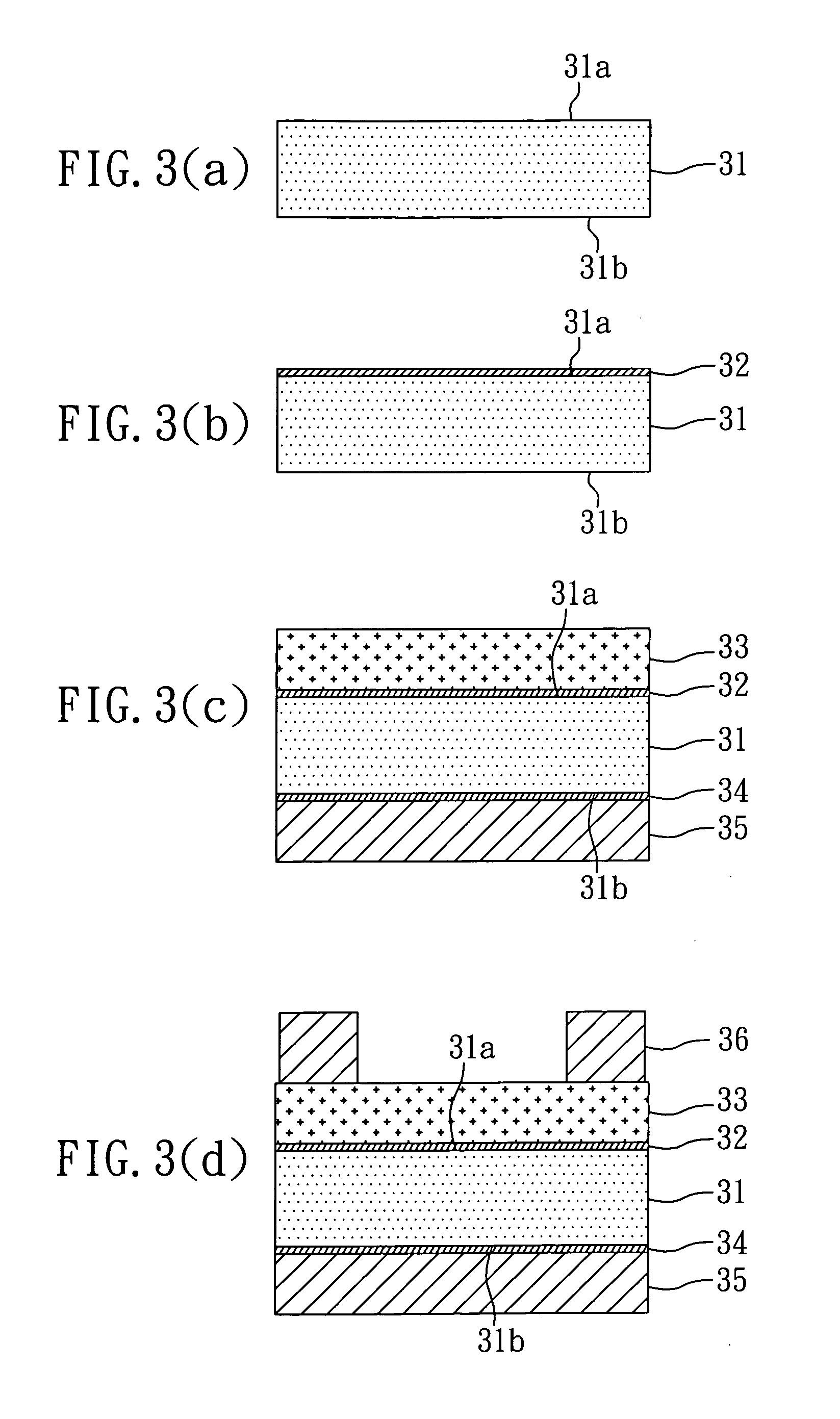Photovoltaic cell
- Summary
- Abstract
- Description
- Claims
- Application Information
AI Technical Summary
Benefits of technology
Problems solved by technology
Method used
Image
Examples
Embodiment Construction
[0025]Exemplary embodiments will now be described in detail with reference to the accompanying drawings to make the Examiner be aware of features and effects of the present invention. In all drawings, the same reference numerals in the drawings denote identical or like elements, and thus their description will be omitted.
[0026]FIGS. 3(a) to 3(d) show a process for fabricating a photovoltaic cell according to one embodiment of the present invention. The photovoltaic cell includes:
[0027]a first bandgap layer 31 having a first surface 31a and a second surface 31b, in which a P-type silicon wafer is used and the bandgap of the P-type silicon wafer is 1.12 eV;
[0028]a second bandgap layer 32, which is a semiconductor film with a thickness of about 10 Å and may be an amorphous silicon film selected from anyone of an intrinsic semiconductor, an N-type semiconductor and a P-type semiconductor but is not limited to an amorphous silicon film, in which other similar films with a similar bandgap...
PUM
 Login to View More
Login to View More Abstract
Description
Claims
Application Information
 Login to View More
Login to View More - R&D
- Intellectual Property
- Life Sciences
- Materials
- Tech Scout
- Unparalleled Data Quality
- Higher Quality Content
- 60% Fewer Hallucinations
Browse by: Latest US Patents, China's latest patents, Technical Efficacy Thesaurus, Application Domain, Technology Topic, Popular Technical Reports.
© 2025 PatSnap. All rights reserved.Legal|Privacy policy|Modern Slavery Act Transparency Statement|Sitemap|About US| Contact US: help@patsnap.com



